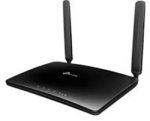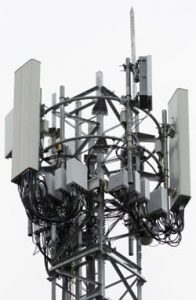


Living in a rural location with poor landline broadband speeds
Although we have previously written about mobile data installations on caravans and mobile homes, this is a real life case study that we recently completed for a client who lived in a rural area where landline broadband to the property was very slow and inconsistent.
Other than deciding to live with the current landline broadband service as it is, alternative options were explored which included Starlink, satellite broadband and using mobile 4g data.
Upon looking at the options, Starlink was the most expensive monthly fee and high install costs. Satellite broadband was’nt as expensive although at this current moment in time the speeds and quality of the service are still not brilliant, so it was decided to persue the idea of 4g data as the client had already been using 4g data at home for their internet – the only issue of this at the minute was the consistency of the connection. A monthly 4g data package was also much cheaper than the other two options.
Step 1 – The current installation and situation
The client was currently using a mobile home router with a 4g sim card located in the downstairs part of the house. As the house was quite big and the wifi signal from the router would not reach all areas of the house, they had also installed a mesh system to extend the signal throughout all areas of the house.
With regards to speed, it would vary anywhere between 40mb at a good time to as little as 2-3mb at other times. The 40mb showed that the capability of reasonable speed was possible, so it was the consistency that needed improving and also to see if more than 40mb was possible.
Step 2 – Testing
The first step in the process was to try and obtain what the best mobile data network provider would be in that location and what could potentially be possible from it.
This was done by testing speeds and connections from sim cards from different mobile network providers stood in various locations outside the property and finding the best location with regards to the local masts. The locations of the masts for each provider in the local area were also taken into account.
It was very important that testing for each network was carried out outdoors rather than inside to minimise interruptions to the signal that could otherwise be caused objects such as house walls. Tests were also carried out over a period of time under different weather conditions and times of days in order to take into account traffic on those local masts.
It was determined that in certain areas outside, there was a signal that regularly would not only be faster than the current 40mb the client was getting, but that it was also more consistent at higher speed.
Step 3 – Solution and implementation
It was decided that as there was a pretty good 4g signal outside the property which was better outside than inside then it was likely that signal strength, speed and consistency was being lost through factors such as the external walls of the property. The best solution would be to therefore install an external antenna outside the property where the signal would then be brought inside the property via cable directly into the router with minimal loss.
Testing had shown that the best location to get a strong signal was just outside the property on a wall which faced the direction of a local mast high up in line with the top floor of the house.
Therefore, an external 4g antenna was installed on a J pole on the wall outside the house high up on the top floor with the cable running into the property into the back of the router inside the room adjacent to the antenna location where it was now relocated to.
The antenna had a very good line of sight with little interference to the local mast and an omni-directional mast was used instead of a directional one. Although a directional mast may have given a stronger gain, the omni-directional mast was chosen in case that particular local mast ever failed or had any downtime, the omni-directiona would then pick up a signal from another local mast without having to be relocated or re-aligned unlike a directional one.
Step 4 – The Results
Using the antenna, tests now showed that speeds were regularly between 40 and 80mb depending on the time of day etc. This was a big difference in both speed and consistency of connection compared to before and far better than what could have been achieved by landline broadband.
Although the router was now upstairs, the coverage within the house was strong all over due to the client’s existing mesh network.
What equipment was required?
- Wifi router with mobile sim capabilities and external antenna connections
- External antenna and cable
- J Pole for mounting
The above was the minimum required for such a setup and is a very cost effective solution and installation is fairly straight forward. If you would like any advice or details on our solutions and installation services then please do not hestitate to contact us.

